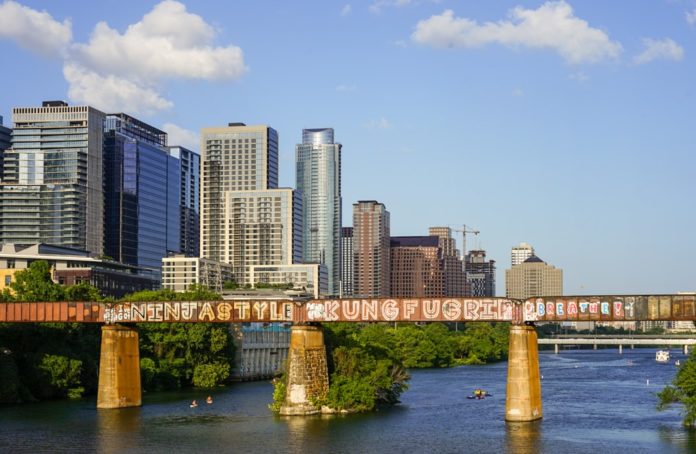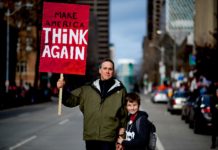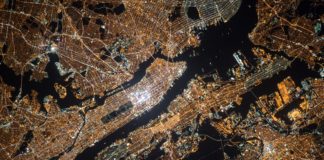
Photo: Courtesy of Megan Markham on Unsplash
Synthesized and condensed below are brief clips from the video recording of the panelists’ discussion as well as summaries of their key insights. The panel was led by Joseph Kopser, transportation executive and co-founder of Austin’s Grayline Group.
The operations for the online discussion were overseen and facilitated by Urbānitūs Associate Editor Robert Brehm.
The full conversation can be viewed here.
‘The transit industry, as exposed now by COVID, has become the backbone taking our foundational workers to and from work’
Joseph Kopser, author, transportation executive and entrepreneur in residence at the McCombs School of Business at the University of Texas at Austin
“… If your mobility and the connections between all those are not reliable, affordable and dependable, you’re going to run into problems with your work by arriving late, and you’re going to run into problems with nutrition and accessing healthy foods…”
“… If we’re just designing a transportation system for some of the people, then we’re not going to have a transportation ecosystem for all the people. And I love sharing the story of what I mean by that in Austin from a personal example: When I was taking the bus commuting to and from work downtown to the southwest of Austin, it would just be me and my briefcase on the bus at the end. One day, as I stood up and began to walk out, the lady, the bus operator, said to me, “So you’re a business guy.” And I said, “Well, yes I am.” And she looked at me and said, “I don’t see many businesspeople on this bus.” And it was so telling that the transit industry, as exposed now by COVID, has become the backbone that took so many of our foundational workers to and from work. Meanwhile, many people had the luxury of staying at home and working behind a camera. But there are a lot of people who require other modes of transportation because they themselves can’t afford their own car…”
:.. So much of what was built comes out of the 1950s under President Dwight Eisenhower. He wanted to make sure that we would have the ability to move troops, and specifically nuclear weapons by ground, if necessary, to be able to fight the Soviets, whether they were coming from the east or the west. Out of that came the interstate highway system. What he never intended for was the fact that we would have highways running, or interstates running, inside of cities. That was never supposed to be part of the plan, but it happened. Those large expenditures came out of an era in which individual tax rates – income tax rates – and corporate tax rates were much higher. So we were paying for infrastructure, building the bridges and the infrastructure that ironically provided access to rail, shipping, ports and highways that facilitated more commerce to be moved and distributed and the movement of people all around the United States…”
“… That one-two punch of prosperity has been something that baby boomers, I’m looking at you, have not, in my opinion, kept up with by paying for the infrastructure. The best example of that is the gas tax. We haven’t changed the gas tax since 1993. And yet, vehicle travel and vehicle efficiency performance have changed greatly, meaning that we’re getting very little from that gas tax anymore to pay for infrastructure…”
“… You get what you pay for; you’re either going to pay for it as you go, as we were building infrastructure 50-70 years ago, or you’re going to pay for it again after the stuff starts falling apart, which not only impacts lives, but it’ll also impact our economy…”
‘The $1.70 cost per passenger mile of Project Connect is almost as much as the $2.00 Uber and Lyft charge us per mile’
Dr. Kara Kockelman, Professor of Transportation Engineering at the University of Texas at Austin and published author
“… We are greedy animals, and it’s just always been an issue. But when you get almost 8 billion people on this planet, it starts to really harm the environment in a very severe way, both climatologically and globally. It’s always been kind of obvious at a local level; for instance, when my kid starts up an old car on my property, that emissions smell is so bad, and I just feel really guilty. But most people don’t even notice the pollution of their tailpipes…”
“… We live in much bigger homes than people in Europe or Japan – it’s like a 4:1 ratio at least , especially here in Texas. It’s not a healthy choice long term, as people really just don’t think about what they consume. And that’s absolutely true of transportation…”
“… For 30 years, Singapore been doing congestion pricing. They also have an auction for vehicles, and once you buy the medallion because you were high enough in the auction, you can keep that vehicle for just six to eight years or so. And so the minimum price of buying an automobile in Singapore is like $100,000. And then after six or eight years, you have to rebid to keep using that vehicle or another vehicle. So right off the bat, very few people have vehicles and the ride-hailing companies are doing great because these guys who do have these medallions can serve everybody. And so it’s working really well… they ration that car purchase and then use the money on those auctions to pay for a first-class transit service. So, we could also do that if we don’t want to give credits back to people; we could plow that into bike lanes, sidewalks, e-bikes and some transit services, which tends to be pretty expensive because the cars are pretty special. Transit is also only on very fixed routes, especially rail lines. And then of course, transit drivers are very expensive. So we’re looking forward to a future of much more demand-responsive, autonomous, smaller vehicles rather than these huge boats – which slow down traffic even as they’re trying to help us with congestion because they actually create a lot of friction around them…”
“… I hope Cap Metro will actually spend that money on smaller vehicles that are much more demand-responsive instead of the $1.70 that this new system is going to cost per passenger mile, which is almost as much as the $2.00 Uber and Lyft charge us per mile…. And they’ll probably have even more efficient vehicles. And so the cost of all that could be just 50 cents per passenger mile rather than the almost $2 that we’d be spending from our property taxes to move people along, mostly just along the two rail lines, which have a very limited set of origins and destinations versus where you need to go…”
“… We have a free market economy on home sales and development. And there’s plenty of green space and brown space that will get developed that we don’t control at all. Just stopping it would be sort of silly and strange. We can’t be like Minneapolis and allow every single family dwelling unit parcel to develop three-fold, but we can be like Vancouver and allow every unit to have a granny unit on site…”
“… I want gas taxes way up at a minimum of another 25 cents per gallon. This is embarrassing. They’re 40 cents per gallon, and they’ve been that way for 27 years…”
‘You can’t expect the federal or state to government to wave a magic wand and fix that; we’ve got to make the right vote here’
Katie Sihler, Senior Director at Cubic Transportation Systems
“… If I could just replace every single vehicle on the planet with a zero-emissions vehicle, I think we’d be in such a far better place. I think it’s also about making sure that we look at the human factors. Tech companies put a ton of time, energy and money into understanding the user experience of their products. We need to do that to understand the user experience of our cities and how people move. Now, I know there’s a ton of research done on that, but we need to make sure the personal decision-making goes into that design…”
“… The problems with transportation affect many different aspects within a city. A third of the emissions that affect climate change come from vehicles. That’s huge. And it’s also something that can be fairly easily fixed compared to other industries. And so it’s things that can be fixed through technology, it’s things that can be fixed through infrastructure, and it’s things that can be fixed through the simple decisions that we make on a personal basis. So that’s one aspect of our transportation network that needs to be fixed globally. Second, it comes down to access to jobs, health care, being able to fill your prescription at a pharmacy – different things that really impact our community overall and which lead to long-term changes and effects. And when you start to impact lower-income areas because they don’t have access to fresh food, that impacts their overall health, which affects their ability to get and keep jobs. It ripples through our entire community and entire economy…”
“… There are some short, medium and long-term solutions. Looking at the short term, we can really turn to technology and connect to different modes of transportation and in an efficient way. Technology has given us those tools; we started that with Ride Scout and the work that was done there. That’s just grown tremendously. And then there are other forms of micro mobility that have emerged over the last few years. So that solves a lot of the connectivity issues between different modes. I think there’s some continued growth that can happen there. Project Connect, which will put in new rail and services and connect different areas throughout the entire Austin area, is huge. If that doesn’t happen, the city will not grow and will not continue to be successful. That’s an investment that everybody needs to agree on. You just can’t expect the federal government or the state government to come in and wave a little magic wand and fix that; we’ve got to make the right vote there. And then long term, it really is about land use and changing our perceptions regarding what are the most important things you want at different phases of your life…”
“… At the risk of generalization, in talking about the benefits, even for Project Connect, a lot of people say, “I don’t ride the train; I don’t want to. Why would I support that?” But if you ride the train, you’re making my travel better, and you’re making my life better, because now you have access, maybe, to a better job and maybe better health care.
What I get excited about when I think about autonomous vehicles is the access it gives to mobility-impaired people. And as we’ve seen with COVID with access to social experiences, we’ve seen people basically suffer a failure to thrive because they’re not getting access to social experiences…”
‘We need to de-stigmatize public transit, we need to improve it and make it where business folks and everyone travels on it…’
Jose Valera, Head of Operations at Riders Share, the leading online marketplace for motorcycle rentals
“… We’re too far from the places we want to go to, need to go to, have to go to. And what’s happening is that we don’t think enough about how we’re too far from those things. Instead, we go the route of attacking the mode of transportation or attacking the vehicle and trying to solve a car, scooter, bike or bus problem when, ultimately, those are just means to connect the places we need to go to or want to go to…”
“… Bringing all of those things we enjoy into smaller and more local pockets alleviates that need to go across town. But unfortunately, though, the burden usually ends up resting on lower-income people. When we focus on the vehicle, we don’t actually distribute that cost associated with that travel; that isn’t a necessity for a lot of people. But just to bring it back, I think focusing on why we’re getting in or on this vehicle and where we’re going, as opposed to just the mode that we’re choosing to make those connections, is important.
“… When we start evaluating what the cost of the transportation is, and who has to bear that cost, we have to look at who also reaps the reward of that transportation. As a specific example, I do think that there should be congestion pricing, as I don’t think that the carrot will ultimately change human behavior. I think that (has to be) a combination of carrot and stick…”
“… We need to recognize that the cost is often paid by people who have paid it again and again and again. So for example, Hispanic people and the African American community lived downtown but moved east of the highway to East Austin. But now that land is most desirable and, in some ways, more affordable in East Austin. So we can put more density there, but then that will again result in a cost of displacement for the people who were already displaced once….
“… With autonomous vehicles, the no-brainer use case that I believe should absolutely be the target is getting people to eliminate their second car. It’s a more modest goal than getting someone to get rid of their only car… I think certainly starting there makes a lot of sense.
“… If the purpose is to reduce the single-occupancy vehicle ownership usage and to provide that on demand, I’m fully on board. Where I have concerns is when we see it as a potential replacement of, or its success comes at the expense of, public transit. Because regardless of how good we get at autonomous vehicles, public transit remains the best way to move people from a geometry perspective. We do need to de-stigmatize it, we need to improve it and make it as it is in Europe, where business folks and everyone else travels on it…
“… Right now, when we think of where people want to go out, it’s Sixth Street, South Congress and maybe a little bit of North Loop. Now everyone has to get to those three places, but where does the cluster work? North Austin, a big cluster downtown, South Austin….If we’re going to send them to the same places to work, the same places to play, we’re not going to be able to solve it with just a vehicle-based solution. I think it really comes down to creating those smaller live/work places in new places where we traditionally haven’t had them in Austin, and really creating smaller neighborhoods with some commercial and entertainment aspects, as well as green spaces and other places…”
You can find the full transcript of the event here.
Join us on the Urbanitus Facebook page to catch future episodes of the Roundtable Series!
If you like what you’ve been reading, please click here to subscribe and we will send you updates and our newsletter.





